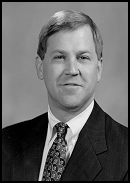(NY Times) Excellent piece from the NY Times discussing how we got here. Thanks Alan.
“Not only have individual financial institutions become less vulnerable to shocks from underlying risk factors, but also the financial system as a whole has become more resilient.” — Alan Greenspan in 2004
George Soros, the prominent financier, avoids using the financial contracts known as derivatives “because we don’t really understand how they work.” Felix G. Rohatyn, the investment banker who saved New York from financial catastrophe in the 1970s, described derivatives as potential “hydrogen bombs.”
And Warren E. Buffett presciently observed five years ago that derivatives were “financial weapons of mass destruction, carrying dangers that, while now latent, are potentially lethal.”
One prominent financial figure, however, has long thought otherwise. And his views held the greatest sway in debates about the regulation and use of derivatives — exotic contracts that promised to protect investors from losses, thereby stimulating riskier practices that led to the financial crisis. For more than a decade, the former Federal Reserve Chairman Alan Greenspan has fiercely objected whenever derivatives have come under scrutiny in Congress or on Wall Street. “What we have found over the years in the marketplace is that derivatives have been an extraordinarily useful vehicle to transfer risk from those who shouldn’t be taking it to those who are willing to and are capable of doing so,” Mr. Greenspan told the Senate Banking Committee in 2003. “We think it would be a mistake” to more deeply regulate the contracts, he added.
Read the entire article
Thursday, October 9, 2008
Subscribe to:
Post Comments (Atom)




No comments:
Post a Comment